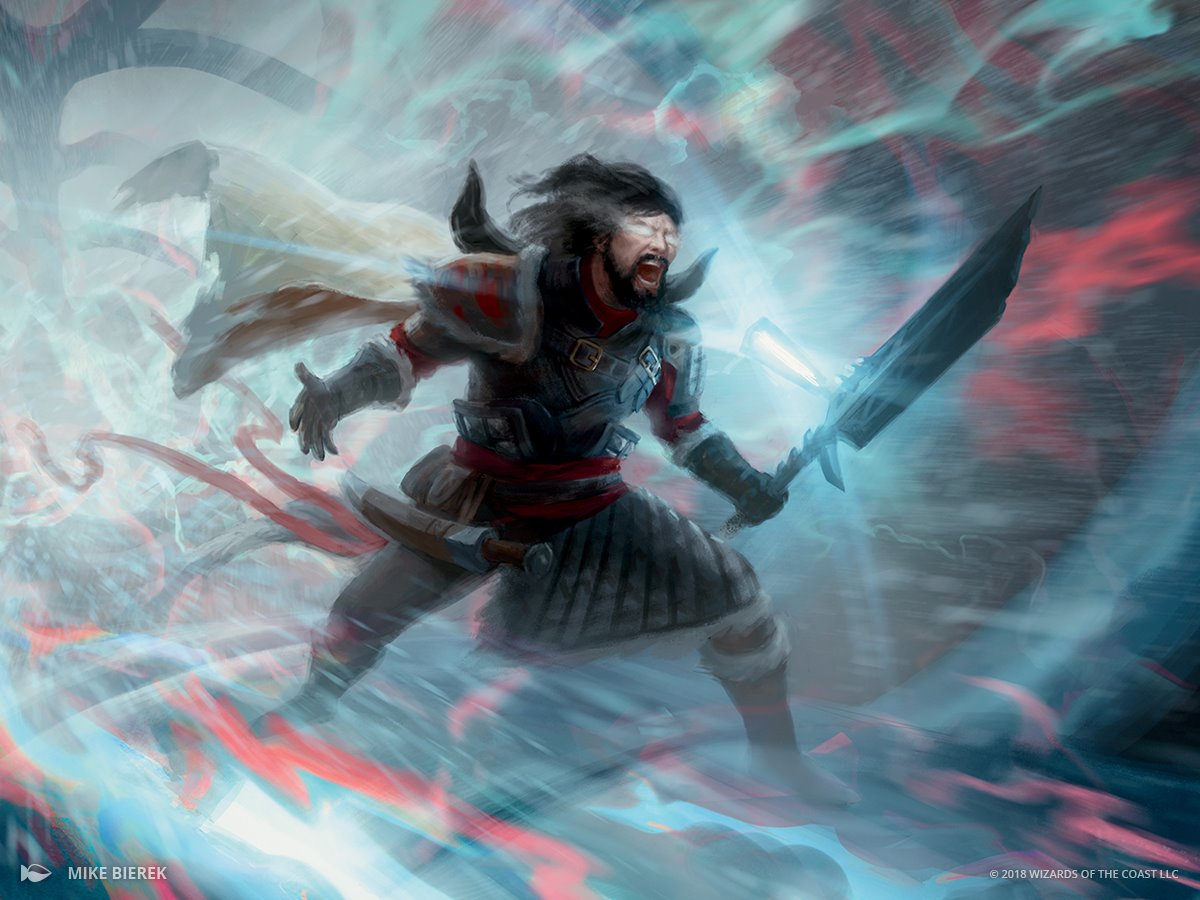Welcome to What We’d Play! With Core Set 2021 shaking things up, many are unsure what they’d play in Historic. That’s where we come in and let you know what we’d play and why we’d play it. Hopefully this advice aids in your decision making over the next handful of days! Be sure to vote for what deck you would play at the end!
Dom Harvey — Bant Nexus
Creatures (5)
Planeswalkers (12)
- 4 Teferi, Hero of Dominaria
- 4 Teferi, Time Raveler
- 2 Tamiyo, Collector of Tales
- 2 Narset, Parter of Veils
Lands (29)
Spells (14)
Sideboard

Historic, once a new playground for exploration and innovation, has quickly collapsed into a heads-up contest between Gruul Aggro and Simic/Bant Nexus. Players who might test this dichotomy and introduce other challengers are driven away by the prospect of playing against Nexus of Fate once again (and again, and again…). Gruul lists are built to go bigger than the mirror while racing Nexus; Nexus lists have to beat each other while surviving Gruul’s lethal starts.
This list aims to do that by eschewing Wilderness Reclamation interactions altogether in favour of Narset, Parter of Veils, which neuters Growth Spiral; Uro, Titan of Nature’s Wrath; Teferi, Time Raveler as well as the deck’s main engine in Teferi, Hero of Dominaria; and Jolrael, Mwonvuli Recluse, an excellent sideboard pivot for the mirror as seen here. Against Gruul in Game 1, Narset digs for Shatter the Sky — by far the most important card in the matchup — while soaking up damage. The other standout feature of this list is Arboreal Grazer, often the best ramp spell against Gruul and another way to deploy planeswalkers quickly in the mirror in Game 1.
Jolrael has already proven itself in Core Set 2021 Standard and I expect to see it show up in some capacity in every Constructed format. Cheap creatures that can take over the game by themselves, backed up by counters, form a historically successful plan in these combo-control mirrors. In a deck with so many ways to draw extra cards, Jolrael triggers regularly and its activated ability often wins the game on the spot. Its strength in the mirror makes access to Narset – and ways to attack it via your own Jolrael or Shark Typhoon – even more important.
Shaheen Soorani — Temur Song
Creatures (20)
- 4 Ornithopter
- 4 Chamber Sentry
- 2 Ugin's Conjurant
- 4 Emry, Lurker of the Loch
- 4 Stonecoil Serpent
- 2 Thassa's Oracle
Lands (21)
Spells (19)
Sideboard

I have been having a lot of fun in Historic lately. Even though I hate playing against Nexus of Fate with every fiber of my being, it’s beatable by the available fast options of the format. Looking away from aggro, I stumbled across this gem from Greg Orange. It is essentially a one-card combo deck, focused around Song of Creation.
When Song of Creation was previewed, many of us knew that it could be a very powerful combo card with the right cast of characters supporting it. I had no idea it would be supported in Historic though, with many of the older broken sets not making the cut. Modern is the home of the crazy combo decks, which is why I am now in the process of transitioning this Historic deck there. In the meantime, Temur Song is a powerful Best-of-One deck that I have began testing in traditional gameplay.
Greg’s deck lacked Underworld Breach, which made it a bit weaker to disruption and created consistency issues. Having access to this enchantment provides a strong insurance policy, ending the game with two mana after resolving Song of Creation. This maindeck has a positive Game 1, which it was built for, but sideboarded games can be rough. I added Return to Nature to deal with on-battlefield combo prevention; Mystical Dispute for the control matchups; Aether Gust to handle the majority of the format’s spells; and Narset, Parter of Veils to dig and apply planeswalker pressure to slow decks. I look forward to continued improvements on this deck, as it exceeds the normal power level of Historic by a significant margin.
Autumn Burchett — Gruul Midrange
Creatures (29)
- 4 Llanowar Elves
- 3 Scavenging Ooze
- 4 Pelt Collector
- 4 Gruul Spellbreaker
- 4 Lovestruck Beast
- 4 Questing Beast
- 4 Bonecrusher Giant
- 2 Elder Gargaroth
Lands (25)
Spells (6)
Sideboard

It has felt to me so far that Historic is largely about Gruul aggressive decks and Nexus of Fate combo decks. There are certainly other decks that can compete, but in order to be truly confident in your deck you need to believe that it can slow down Gruul’s Llanowar Elves and Burning-Tree Emissary starts whilst also having the closing speed that opposing Nexus decks demand of you. These are very different targets to have to simultaneously hit, which is a big part of the tension in the format.
Personally I’ve been enjoying this slightly bigger, slightly midrangier build of Gruul that I found, in large part because of how the larger creature sizing positions you in mirrors. When your opponent has eleven Grizzly Bears in their maindeck and you have Lovestruck Beast and Elder Gargaroth, you’ll often find yourself feeling that the only opposing card you care about, at least before you can overload on removal during sideboarding, is Embercleave.
You lose some of Gruul Aggro’s natural edge against the Nexus decks as you don’t have access to ridiculous Burning-Tree Emissary starts, but it’s still hard for them to keep up with you especially with Bonecrusher Giant and Questing Beast continuing to make any sideboard plans involving Root Snare look very awkward.


